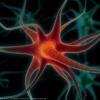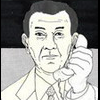
GPC (choline), Uridine, DHA
#2101
Posted 27 June 2013 - 10:13 PM
#2102
Posted 28 June 2013 - 08:47 AM
I look forward to your SP uridine review
+1
#2103
Posted 28 June 2013 - 03:18 PM
I wonder if there is something to that. I never had any results from uridine in the past (despite taking the normal choline/fish oil cofactors). I have recently started mucuna though and I might give uridine another shot later.Yesterday, the emotional stabilizing effect of uridine did not come into play until I increased my dosage to 1200mg uridine - and that did not help either, until I increased my mucuna dosage. Seems like the brain needs more dopamine when using uridine? That would explain the initially strong effects, when enough dopamine was available, dopamine levels from there on were declining, decreasing uridines effect. Hm.
So today I'll be back at 600mg/day (ump, all subl.), and increase mucuna to see what happens.
#2104
Posted 29 June 2013 - 01:54 AM
Seems like cytidine is better than CDP-choline, at least in rats:
Antidepressant-like effects of cytidine in the forced swim test in rats.
BACKGROUND:
Altered brain phospholipid metabolism may be involved in the pathophysiology of cocaine dependence and mood disorders. Evidence suggests that citicoline, a rate-limiting metabolite for phospholipid synthesis, reduces cocaine craving in human addicts. Because antidepressants can reduce cocaine craving, we explored in rats the possibility that citicoline has antidepressant effects. We also tested the primary metabolites of citicoline, cytidine and choline.
METHODS:
We examined if citicoline or metabolites alter immobility in the forced swim test. We used two scoring methods: latency to become immobile, a simple method that identifies antidepressants, and behavioral sampling, a complex method that differentiates antidepressants according to pharmacological mechanisms.
RESULTS:
Over a range of doses, citicoline did not affect behavior in the forced swim test. At molar equivalent doses, cytidine dramatically decreased immobility, whereas choline tended to increase immobility. The effects of cytidine resemble those of desipramine, a standard tricyclic antidepressant. None of the treatments affected locomotor activity, and cytidine did not establish conditioned place preferences.
CONCLUSIONS:
Citicoline does not have effects in the forced swim test, but its primary metabolites have opposing effects: cytidine has antidepressant-like actions, whereas choline has prodepressant-like actions. At antidepressant doses, cytidine lacks stimulant and rewarding properties. This is the first report of potential antidepressant effects of cytidine.
PMID: 12022961
So when will cytidine be available as supplement?
.
Yes, but rats have a different pathway. For humans the exact equivalent is uridine.
Guys, may be worth mentioning that some of the people on reddit who tried the Smart Powders uridine product saw same results as a 250mg UMP oral dose, by taking a 250mg dose sublingually.
ie. *If* that is accurate, you need approximately 6x the standard UMP dose for either dosing method.
Anyone who bought the SP product care to test that out?
#2105
Posted 29 June 2013 - 10:46 PM
.
Anyone who bought the SP product care to test that out?
I actually found SP Uridine to be significantly different. I took 150mg sublingually which resulted in headache, mood flattening, and bran-fog. I did notice the next day was good in the AM, but I couldn't tell if I just felt better to not have the Uridine induced brain-fog. I took it for about four days before I decided to go back to UMP. UMP is much better for mood and cognition in my experience, and I personally recommend UMP over straight Uridine all day long.
#2106
Posted 01 July 2013 - 05:03 PM
#2107
Posted 02 July 2013 - 09:51 AM
1 x Uridine 5'-monophosphate 300 mg (Cardiovascular research)
1 x 500mg scoop Alpha-GPC
Would the product below be OK to use as a source of DHA?
http://www.seven-sea...e-cod-liver-oil
Per 10ml serving it contains:
Average Values Per 10 ml % RDA Fish Oil Blend 5.5 g (60%) Pure Cod Liver Oil 3.7 g (40%) Providing Omega-3 nutrients 2800 mg * of which EPA & DHA 2300 mg * Fish Oil and Pure Cod Liver Oil 9.2 g * DHA 920 mg Vitamin D 5 μg 100 Vitamin E 10 mg α-TE 83 Calories 82.3 kcals Fat 9.2 g EPA 1380 mg
Edited by Symbiosisneurocircuit, 02 July 2013 - 09:52 AM.
#2108
Posted 02 July 2013 - 03:34 PM
Positive result after the mucuna. I finally felt something from uridine (calm and focus). In fact, 250 mg of sublingual uridine I felt was a bit too much; I cut that in half.I wonder if there is something to that. I never had any results from uridine in the past (despite taking the normal choline/fish oil cofactors). I have recently started mucuna though and I might give uridine another shot later.Yesterday, the emotional stabilizing effect of uridine did not come into play until I increased my dosage to 1200mg uridine - and that did not help either, until I increased my mucuna dosage. Seems like the brain needs more dopamine when using uridine? That would explain the initially strong effects, when enough dopamine was available, dopamine levels from there on were declining, decreasing uridines effect. Hm.
So today I'll be back at 600mg/day (ump, all subl.), and increase mucuna to see what happens.
I've decided that mucuna might not be something I want to be on long term with the concerns about safety. But maybe a dopamine precursor like l-phenylalanine could be a missing puzzle piece for non-responders.
Edited by stephen_b, 02 July 2013 - 03:36 PM.
#2109
Posted 02 July 2013 - 07:38 PM
Edited by Fate, 02 July 2013 - 07:39 PM.
#2110
Posted 02 July 2013 - 11:33 PM
so i have decided to go with CDP Choline, Fish OIl and PQQ.
PQQ is a new one for me. I have read through google that it helps with Nerve Growth Factor and mitochondrial biogenesis among other things.
I am expecting some focus and calmness, better concentration/comprehension, energy, improved memory/recall and fast reaction time without being wired.
Lets see if i get all that (or some of it)...and more importantly ...if the effects are long lasting from the combination of these supplements.
waiting for them to arrive.
Edited by lesterlong, 02 July 2013 - 11:35 PM.
#2111
Posted 07 July 2013 - 03:01 PM
After quitting the uridine I can consume caffeine, tyrosine/phenylalanine and zinc without any problems. I don't get brain fog any more, which is a huge relief as I love my coffee.
#2112
Posted 14 July 2013 - 11:25 PM
#2113
Posted 15 July 2013 - 03:25 AM
#2114
Posted 15 July 2013 - 02:11 PM
I too unknowingly got the "bunk" SP Uridine powder. It seems after reading some of the posts on here and on Reddit that indeed this powdery version is just plain Uridine, without the extra phosphate bond. From a quick google search it seems that Uridine gets converted into Uridine Monophosphate in the body, albeit I don't know what the conversion ratio is like, in other words how much free base Uridine gets turned into Uridine Monophosphate.
So if you got the SP Uridine powder you might not have to chuck it in the bin, you'll just have to supplement more of it to get the same effects.. It would be nice getting someone's view on this who has tried both versions.
#2115
Posted 16 July 2013 - 03:42 PM
#2116
Posted 17 July 2013 - 05:53 AM
#2117
Posted 17 July 2013 - 06:45 AM
#2118
Posted 17 July 2013 - 07:20 AM
OBJECTIVE:
It has been demonstrated that uridine infusion induces insulin resistance in rats. Furthermore, it was recently reported that plasma uridine is correlated with homeostasis model assessment of insulin resistance (HOMA-R) in hypertensive patients. Therefore, we investigated whether plasma uridine was correlated with HOMA-R in patients with non-insulin-dependent diabetes mellitus (NIDDM).
SUBJECTS AND METHODS:
The subjects were 23 male patients with NIDDM (average age 63 years) and 18 healthy males (average age 60 years). Blood samples were drawn after an overnight fast, plasma uridine was then measured using high-performance liquid chromatography.
RESULTS:
The average plasma uridine concentration in patients with NIDDM was higher than that in healthy subjects (P < 0.05). Furthermore, plasma uridine values were positively correlated with HOMA-R (r = 0.48, P < 0.05), serum insulin (r = 0.46, P < 0.05), and serum C-peptide radioimmunoreactivity (CPR) (r = 0.44, P < 0.05) values, whereas they were not significantly correlated with fasting blood glucose or hemoglobin A1c values. Conclusion: We found a positive relationship between plasma uridine value and HOMA-R, serum insulin, and CPR, suggesting that plasma uridine is a marker of insulin resistance in patients with NIDDM.
Insulin resistance induced by maximal exercise correlates with a post-exercise increase in uridine concentration in the blood of healthy young men.
Abstract
Uridine is postulated to participate in the development of insulin resistance. Since exercise is an effective tool in the treatment of insulin resistance it appeared justified to assess the impact of maximal exercise on plasma uridine and insulin sensitivity indices (e.g. insulin and HOMA-IR) in healthy subjects. The study included forty-four healthy males (18.5+/-2.92 years, VO(2)max 50.2+/-6.26 ml kg(-1) min(-1)). Subjects performed a single maximal exercise on a bicycle ergometer. Blood samples were taken three times: immediately before exercise, immediately after exercise and at the 30(th) min of rest. Uridine concentrations were determined in the whole blood using high-performance liquid chromatography. Serum insulin levels were measured by a specific ELISA method. Insulin sensitivity was assessed by homeostasis model assessment method (HOMA-IR). A maximal exercise-induced increase in the concentration of uridine correlated with post-exercise increases in insulin levels and HOMA-IR. Our results indicate a relationship between the concentration of uridine in the blood and indicators of insulin sensitivity in healthy subjects. We are the first to demonstrate that a maximal exercise-induced increase in the concentration of uridine is correlated with post-exercise increases in insulin levels and HOMA-IR in healthy subjects. It appears that uridine may be an indicator of insulin resistance.
In the past I supplemented with TAU, but I've taken it out of my regimen since reading this research about a year ago.
Edited by Joe Cohen, 17 July 2013 - 07:44 AM.
#2119
Posted 17 July 2013 - 11:45 AM
#2120
Posted 25 July 2013 - 06:24 AM
Relationship between plasma uridine and insulin resistance in patients with non-insulin-dependent diabetes mellitus.
OBJECTIVE:
It has been demonstrated that uridine infusion induces insulin resistance in rats. Furthermore, it was recently reported that plasma uridine is correlated with homeostasis model assessment of insulin resistance (HOMA-R) in hypertensive patients. Therefore, we investigated whether plasma uridine was correlated with HOMA-R in patients with non-insulin-dependent diabetes mellitus (NIDDM).
SUBJECTS AND METHODS:
The subjects were 23 male patients with NIDDM (average age 63 years) and 18 healthy males (average age 60 years). Blood samples were drawn after an overnight fast, plasma uridine was then measured using high-performance liquid chromatography.
RESULTS:
The average plasma uridine concentration in patients with NIDDM was higher than that in healthy subjects (P < 0.05). Furthermore, plasma uridine values were positively correlated with HOMA-R (r = 0.48, P < 0.05), serum insulin (r = 0.46, P < 0.05), and serum C-peptide radioimmunoreactivity (CPR) (r = 0.44, P < 0.05) values, whereas they were not significantly correlated with fasting blood glucose or hemoglobin A1c values. Conclusion: We found a positive relationship between plasma uridine value and HOMA-R, serum insulin, and CPR, suggesting that plasma uridine is a marker of insulin resistance in patients with NIDDM.
Insulin resistance induced by maximal exercise correlates with a post-exercise increase in uridine concentration in the blood of healthy young men.
Abstract
Uridine is postulated to participate in the development of insulin resistance. Since exercise is an effective tool in the treatment of insulin resistance it appeared justified to assess the impact of maximal exercise on plasma uridine and insulin sensitivity indices (e.g. insulin and HOMA-IR) in healthy subjects. The study included forty-four healthy males (18.5+/-2.92 years, VO(2)max 50.2+/-6.26 ml kg(-1) min(-1)). Subjects performed a single maximal exercise on a bicycle ergometer. Blood samples were taken three times: immediately before exercise, immediately after exercise and at the 30(th) min of rest. Uridine concentrations were determined in the whole blood using high-performance liquid chromatography. Serum insulin levels were measured by a specific ELISA method. Insulin sensitivity was assessed by homeostasis model assessment method (HOMA-IR). A maximal exercise-induced increase in the concentration of uridine correlated with post-exercise increases in insulin levels and HOMA-IR. Our results indicate a relationship between the concentration of uridine in the blood and indicators of insulin sensitivity in healthy subjects. We are the first to demonstrate that a maximal exercise-induced increase in the concentration of uridine is correlated with post-exercise increases in insulin levels and HOMA-IR in healthy subjects. It appears that uridine may be an indicator of insulin resistance.
In the past I supplemented with TAU, but I've taken it out of my regimen since reading this research about a year ago.
Do you have "NIDDM" ?
#2121
Posted 25 July 2013 - 06:50 AM
"It has been demonstrated that uridine infusion induces insulin resistance in rats"
Uridine likely contributes to IR, which likely contributes to NIDDM.
"Uridine is postulated to participate in the development of insulin resistance....A maximal exercise-induced increase in the concentration of uridine correlated with post-exercise increases in insulin levels and HOMA-IR. Our results indicate a relationship between the concentration of uridine in the blood and indicators of insulin sensitivity in healthy subjects.... It appears that uridine may be an indicator of insulin resistance."
Edited by Joe Cohen, 25 July 2013 - 06:52 AM.
#2122
Posted 05 August 2013 - 09:16 PM
No. Completely irrelevant point.
"It has been demonstrated that uridine infusion induces insulin resistance in rats"
Uridine likely contributes to IR, which likely contributes to NIDDM.
"Uridine is postulated to participate in the development of insulin resistance....A maximal exercise-induced increase in the concentration of uridine correlated with post-exercise increases in insulin levels and HOMA-IR. Our results indicate a relationship between the concentration of uridine in the blood and indicators of insulin sensitivity in healthy subjects.... It appears that uridine may be an indicator of insulin resistance."
No, this is incorrect.
It's been demonstrated that uridine is part of that particular function and in T1D patients, that process is incomplete, meaning that the uridine normally used is still circulating in the blood plasma.
It's an effect, not a cause.
#2123
Posted 14 August 2013 - 01:08 PM
I'm trying the SP product right now. It's somewhat bitter, and appears more stimulating to me than UMP; I'm taking in the range of 50mg SL and getting effects like a moderate dose of caffeine taken with low tolerance.
Could you elaborate? What 'particular function', and how do you explain uridine levels rising as an effect of insulin resistance or increased insulin levels, especially in healthy subjects as found by some of the studies above?No. Completely irrelevant point.
"It has been demonstrated that uridine infusion induces insulin resistance in rats"
Uridine likely contributes to IR, which likely contributes to NIDDM.
"Uridine is postulated to participate in the development of insulin resistance....A maximal exercise-induced increase in the concentration of uridine correlated with post-exercise increases in insulin levels and HOMA-IR. Our results indicate a relationship between the concentration of uridine in the blood and indicators of insulin sensitivity in healthy subjects.... It appears that uridine may be an indicator of insulin resistance."
No, this is incorrect.
It's been demonstrated that uridine is part of that particular function and in T1D patients, that process is incomplete, meaning that the uridine normally used is still circulating in the blood plasma.
It's an effect, not a cause.
Edited by Raza, 14 August 2013 - 02:02 PM.
#2124
Posted 21 August 2013 - 10:20 AM
#2125
Posted 23 August 2013 - 11:40 AM
Uridine taken in that form rapidly disappears from the blood, being turned into UMP or taken up by erythrocytes which bind it to glucose for reserve storage of both. Knowing this, there is both less reason to worry if blood uridine did result in insulin resistance (it won't be in the blood for long - TAU would be a bigger worry), and a credible MoA for insulin resistance causing blood uridine levels to increase; insulin signals for glucose uptake at most cells that do this, and erythrocytes take up uridine for use with glucose - it is believable that they'd do this less with insulin resistance.
So, I'm not worried about that anymore.
Edited by Raza, 23 August 2013 - 11:42 AM.
#2126
Posted 23 August 2013 - 03:22 PM
No. Completely irrelevant point.
"It has been demonstrated that uridine infusion induces insulin resistance in rats"
Uridine likely contributes to IR, which likely contributes to NIDDM.
"Uridine is postulated to participate in the development of insulin resistance....A maximal exercise-induced increase in the concentration of uridine correlated with post-exercise increases in insulin levels and HOMA-IR. Our results indicate a relationship between the concentration of uridine in the blood and indicators of insulin sensitivity in healthy subjects.... It appears that uridine may be an indicator of insulin resistance."
No, this is incorrect.
It's been demonstrated that uridine is part of that particular function and in T1D patients, that process is incomplete, meaning that the uridine normally used is still circulating in the blood plasma.
It's an effect, not a cause.
Then why has it "been demonstrated that uridine infusion induces insulin resistance in rats." I'm assuming they are talking about normal rats.
#2127
Posted 23 August 2013 - 03:45 PM
Re: The insulin resistance issue:
Uridine taken in that form rapidly disappears from the blood, being turned into UMP or taken up by erythrocytes which bind it to glucose for reserve storage of both. Knowing this, there is both less reason to worry if blood uridine did result in insulin resistance (it won't be in the blood for long - TAU would be a bigger worry), and a credible MoA for insulin resistance causing blood uridine levels to increase; insulin signals for glucose uptake at most cells that do this, and erythrocytes take up uridine for use with glucose - it is believable that they'd do this less with insulin resistance.
So, I'm not worried about that anymore.
Which forms are taken up and which aren't? What if there is saturation? Can you please provide a source that says it is rapidly taken up?
This study tested 36g 3X a day and claims it had no effect in humans, which is a good sign and supports your position.
http://www.intmedpre...14-ea43c0236a7a
According to the following author, he thinks it will help based on theoretical reasons, but I don't know if he saw the above studies. What concerns me is that it says it's sustained at higher than normal levels. So there's still some concern with TAU. Thoughts, Raza?
If mitochondrial dysfunction is, indeed, the underlying cellular defect that explains abnormal glucose metabolism, agents that enhance mitochondrial function—such as uridine— may improve glucose homeostasis in this and other insulin-resistant states (e.g. type 2 diabetes, the metabolic syndrome, polycystic ovary syndrome, and nonalcoholic steatohepatitis). Our study found that administration of NucleomaxX®, containing predominantly TAU, was able to overcome prior issues of poor bioavailability with pure uridine in human subjects with no adverse effects. Given its ability to raise and sustain supraphysiologic uridine levels, TAU may be useful in the management of disorders previously treated with uridine.
http://www.plosone.o...al.pone.0014709
#2128
Posted 23 August 2013 - 07:05 PM
Then why has it "been demonstrated that uridine infusion induces insulin resistance in rats." I'm assuming they are talking about normal rats.
The results on that study:
"RESULTS: The average plasma uridine concentration in patients with NIDDM was higher than that in healthy subjects (P < 0.05). Furthermore, plasma uridine values were positively correlated with HOMA-R (r = 0.48, P < 0.05), serum insulin (r = 0.46, P < 0.05), and serum C-peptide radioimmunoreactivity (CPR) (r = 0.44, P < 0.05) values, whereas they were not significantly correlated with fasting blood glucose or hemoglobin A1c values. Conclusion: We found a positive relationship between plasma uridine value and HOMA-R, serum insulin, and CPR, suggesting that plasma uridine is a marker of insulin resistance in patients with NIDDM."
#2129
Posted 23 August 2013 - 07:27 PM
Then why has it "been demonstrated that uridine infusion induces insulin resistance in rats." I'm assuming they are talking about normal rats.
The results on that study:
"RESULTS: The average plasma uridine concentration in patients with NIDDM was higher than that in healthy subjects (P < 0.05). Furthermore, plasma uridine values were positively correlated with HOMA-R (r = 0.48, P < 0.05), serum insulin (r = 0.46, P < 0.05), and serum C-peptide radioimmunoreactivity (CPR) (r = 0.44, P < 0.05) values, whereas they were not significantly correlated with fasting blood glucose or hemoglobin A1c values. Conclusion: We found a positive relationship between plasma uridine value and HOMA-R, serum insulin, and CPR, suggesting that plasma uridine is a marker of insulin resistance in patients with NIDDM."
That doesn't disprove my point because we see that it's correlated with serum insulin, so that means that insulin levels rose. So HbA1C and FBG may have not changed because the body produced more insulin, which is characteristic of insulin resistance. We don't see a causal relationship in these studies, but one did mention that uridine infusion induces insulin resistance in rats, which indicates that's it's a cause and not just a correlation. Either way, the human study that I referenced in my previous post didn't show a change in IR, but TAU might be a problem because it stays in the blood longer. It's an open question right now.
#2130
Posted 23 August 2013 - 07:56 PM
Then why has it "been demonstrated that uridine infusion induces insulin resistance in rats." I'm assuming they are talking about normal rats.
The results on that study:
"RESULTS: The average plasma uridine concentration in patients with NIDDM was higher than that in healthy subjects (P < 0.05). Furthermore, plasma uridine values were positively correlated with HOMA-R (r = 0.48, P < 0.05), serum insulin (r = 0.46, P < 0.05), and serum C-peptide radioimmunoreactivity (CPR) (r = 0.44, P < 0.05) values, whereas they were not significantly correlated with fasting blood glucose or hemoglobin A1c values. Conclusion: We found a positive relationship between plasma uridine value and HOMA-R, serum insulin, and CPR, suggesting that plasma uridine is a marker of insulin resistance in patients with NIDDM."
That doesn't disprove my point because we see that it's correlated with serum insulin, so that means that insulin levels rose. So HbA1C and FBG may have not changed because the body produced more insulin, which is characteristic of insulin resistance. We don't see a causal relationship in these studies, but one did mention that uridine infusion induces insulin resistance in rats, which indicates that's it's a cause and not just a correlation. Either way, the human study that I referenced in my previous post didn't show a change in IR, but TAU might be a problem because it stays in the blood longer. It's an open question right now.
Well, I haven't seen a human study that shows that, let alone in healthy subjects, particularly at the mg doses we are discussing.. I think you are overly concerned.
If it helps, my new health insurance recently demanded blood and urine tests and the results that came back, after 2 years of this protocol, did not show any markers for diabetes (or any issues at all!)
Also tagged with one or more of these keywords: choline, uridine, dha, omega-3, epa, ump, tau, b vitamins
1 user(s) are reading this topic
0 members, 1 guests, 0 anonymous users





















































